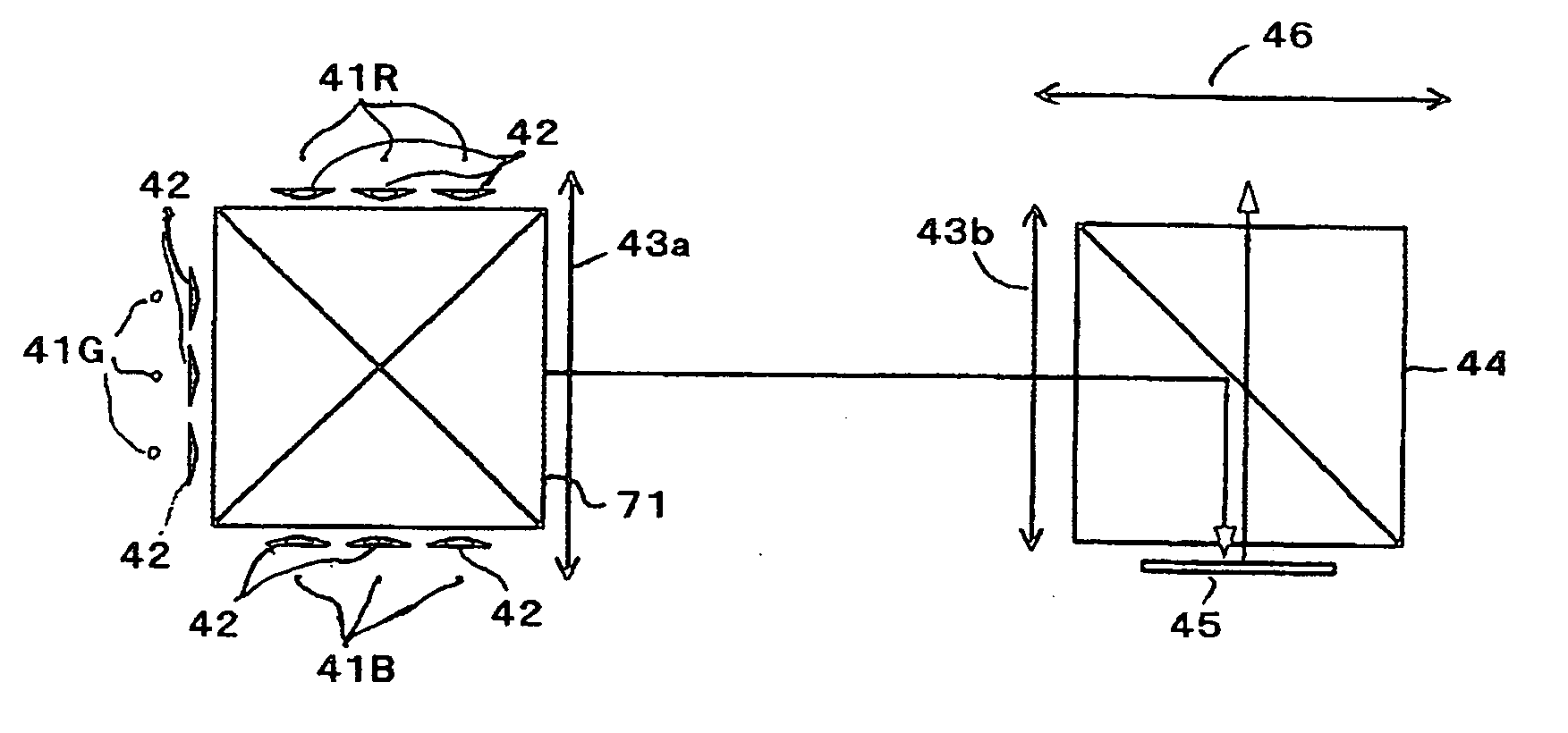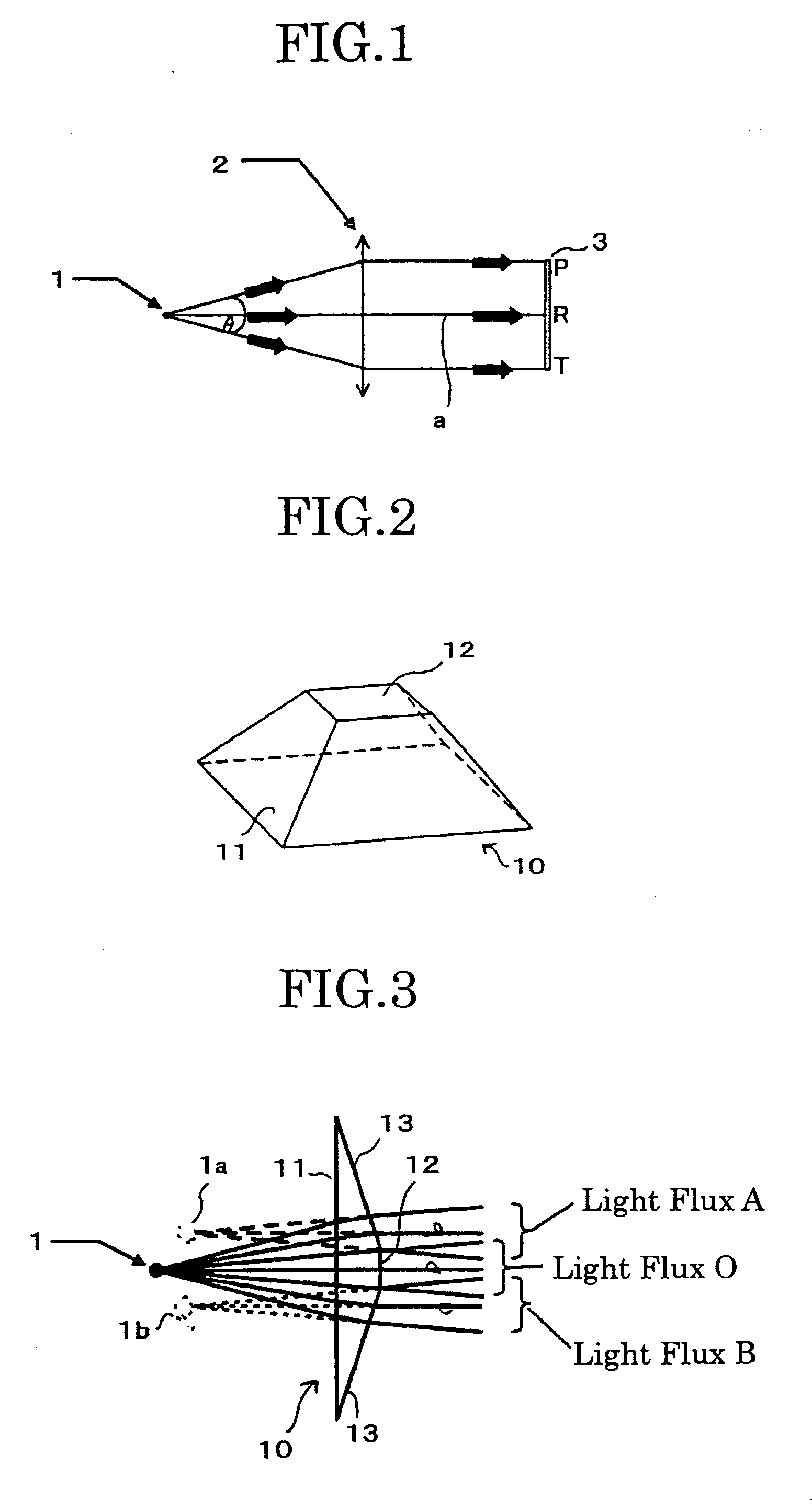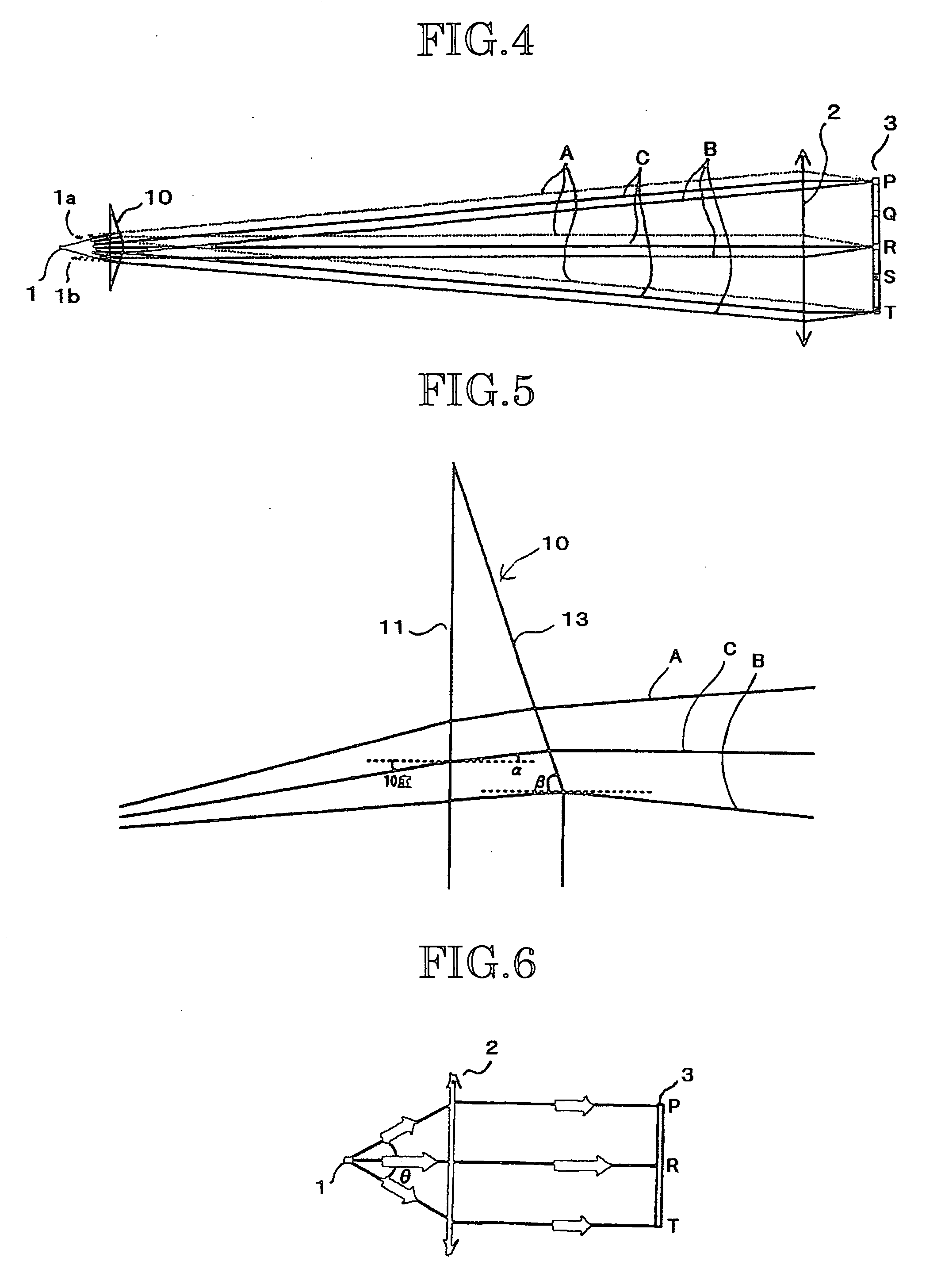Image-displaying apparatus
a technology of image displaying and auxiliary equipment, which is applied in the direction of fixed installation, lighting and heating equipment, instruments, etc., can solve the problems of low conversion efficiency from input power to light, shortened life span, and inability to couple the cable stitch lens unit to the leds, so as to reduce the uneven illumination of the light valve
- Summary
- Abstract
- Description
- Claims
- Application Information
AI Technical Summary
Benefits of technology
Problems solved by technology
Method used
Image
Examples
first embodiment
[0065]FIG. 2 shows the structure of a secondary light source-forming prism in the image-displaying apparatus according to the present invention. The secondary light source-forming prism 10 comprises two rectangular planes: a first rectangular plane 11 and a second rectangular plane 12 and four trapezoidal planes. Since the aspect ratio of the light valve 3 in FIG. 1 is set at 1:1, explanation will be made in the present embodiment on the assumption that the rectangular planes of the secondary light source-forming prism 10 are square. The shape of the retangular planes can be arbitrarily selected depending upon the aspect ratio of the lens bulb 3.
[0066]FIG. 3 shows the construction of the LED portion using the above secondary light source-forming prism.
[0067] The LED section shown in FIG. 3 is constituted by the LED 1 of FIG. 1 as the point-source light and the secondary light source-forming prism 10 of FIG. 2 which is arranged near the LED 1. In this case, as shown in FIG. 3, the l...
second embodiment
[0081] Next, the image-displaying apparatus according to the present invention will be explained below.
[0082] The image-displaying apparatus according to the second embodiment shows the illuminance distribution when the solid angle θ of the emitted light flux of the LED in the same orientated light distribution as in the first embodiment is further taken in a range of 30 degrees to 60 degrees.
[0083]FIG. 6 shows the construction of an image-displaying apparatus in which no secondary light source-forming prism is disposed. FIG. 7 shows the construction of an image-displaying apparatus in which a secondary light source-forming prism is disposed. In this case, the open angle of the trapezoid of the secondary light source-forming prism 20 from the LED along the optical axis is larger as compared with the first embodiment. Corresponding to this, when the light fluxes are traced, an end portion of each of the light fluxes A and B does not enter the light valve 3, resulting in a loss, whic...
third embodiment
[0089] Next, the image-displaying apparatus according to the present invention will be explained.
[0090]FIG. 8 shows the construction of an LED portion utilizing a secondary light source-forming prism as the third embodiment.
[0091] The secondary light source-forming prism shown in FIG. 8 has a second rectangular plane 31 having a curved face on a light-emitting side. In this case, as shown in FIG. 8, the virtual image of the light source of the central light flux is aligned with locations 1a, 1b of the secondary light sources in the optical-axis direction of the light fluxes passing trapezoidal planes 32 of the secondary light source-forming prism 30. This LED portion is more preferable than that explained in the first embodiment.
[0092]FIG. 9 shows the construction of a color image-displaying apparatus to which the image-displaying apparatus of the present invention is applied.
[0093] A color image-displaying apparatus shown in FIG. 9 comprises a red LED 41R, a green LED 41G, a blu...
PUM
 Login to View More
Login to View More Abstract
Description
Claims
Application Information
 Login to View More
Login to View More - R&D
- Intellectual Property
- Life Sciences
- Materials
- Tech Scout
- Unparalleled Data Quality
- Higher Quality Content
- 60% Fewer Hallucinations
Browse by: Latest US Patents, China's latest patents, Technical Efficacy Thesaurus, Application Domain, Technology Topic, Popular Technical Reports.
© 2025 PatSnap. All rights reserved.Legal|Privacy policy|Modern Slavery Act Transparency Statement|Sitemap|About US| Contact US: help@patsnap.com



